Blended Learning, Education Quality, Faculty, Feature, Flipped Classrooms, Foreign Expansion, International, Interview, Math, MOOCs, Open Source Education, Personalized Learning, Required, Science, Startups, STEM, Teachers, Technology, top, Universities & Colleges - Written by Paul Glader on Thursday, January 3, 2013 6:00 - 1 Comment
Jörn Loviscach: A German Math Teaching Sensation Emerges On YouTube & Udacity
By Paul Glader, Managing Editor
BERLIN — Bespectacled, bearded and donning a tweed jacket, Jörn Loviscach speaks with a measured cadence that demonstrates a concern for his students to grasp what he’s saying.
It’s that careful communication style that has helped Loviscach gain nearly 8 million views and more than 16,000 subscribers to his YouTube channel of math instructional videos in German language. He’s also now teaching a Udacity course that challenges thousands of students to use numerical methods to solve real world problems such as rescuing the Apollo 13 astronauts, stopping the spread of epidemics and fighting forest fires.
Loviscach has become a Sal Khan of Germany. But unlike the popular founder of the Khan Academy who binge learns a wide range of topics and spits out short videos for students to watch, Loviscach is trained in mathematical physics and a seasoned classroom professor with a focus on higher education, rather than a K-12 audience. His online teaching stardom is a side gig to his day job in Bielefeld, Germany, teaching basic math courses to engineering students at the University of Applied Sciences.
“I have a particular style of teaching. I try to be very visual. No proofs. No definitions. I try to explain why and how – how these things come into being and are used,“ says Loviscach, during an interview with WiredAcademic at an education conference in Berlin recently. While Sal Khan uses a more fixed recipe of teaching, “I try to avoid the recipe style,’’ Loviscach says.
Loviscach’s story reveals the fascinating potential for highly skilled teachers and faculty members to radically flip their existing classrooms and to create resources for a wider range of learners. In doing so, he’s also expanding and enriching his own career as a teacher and scientist.
Early On, A Math & Computer Nerd
As a teen-ager growing up in Bielefeld, Loviscach built his own music synthesizers. During his school years, he accelerated in math and physics, getting a PhD in the latter before becoming a journalist at German magazines for seven years.
After teaching computer graphics and math at Bremen University of Applied Sciences, he took a job teaching math and computer science at the University of Applied Sciences in Bielefeld, putting hundreds of engineering students through the paces of basic math courses in preparation for their careers in industries such as heating, solar power and wind energy. Annoyed by the limits of lecturing that come with the legacy of the Prussian classroom model, Loviscach decided to experiment.
A few years ago, Loviscach started recording screencasts of his lectures – that is: the spoken word as audio, plus the computer screen’s content as video – using an old tablet PC notebook that runs Windows. He flipped his classroom, posting the videos to a channel on YouTube and requiring students to watch the lectures he’s recorded before. They can then use more class time for trouble-shooting and problem solving together.
Similar to Sal Khan’s viral experience, other German university and high school students started watching Loviscach’s videos. Before long, his videos were seeing 10,000 view per day, “which is not too much compared to Lady Gaga,“ he quips. “But it’s good for a math channel.“
What does he think of some math teachers’ criticisms of Khan’s teaching methods being rushed and, sometimes, imprecise? Loviscach respect Khan for his achievements and help to students. But, he agrees with other math teachers who think “He has strange ways to derive some things. There’s often a simpler way to get to an answer.“
As a tinkerer and computer expert, he’s perfected his recording and editing routine so that he can edit new videos in a matter of minutes using a video recorder, speech recognition and software that he has written to speed up the process. He could start earning revenue from that kind of traffic on YouTube’s education portals. But he choses not to. “As a student, I would hate it,“ he says.
He gives a lot of tender loving care, “TLC” to his Bielefeld students. They work at home and in groups. He keeps his own list of videos nicely organized on the course page, better arranged there than on YouTube.
Loviscach says teaching at the German “Fachhochschule” (University of Applied Sciences) brings a kind of mission to enable students to get into engineering. But, despite his love for teaching, he also finds teaching at a Fachhochschule can sometimes be a bit strenuous as it involves “a lot of review and remedial training.“
Connecting With Sebastian Thrun & Udacity
When the German media writes about Germany’s exiled academic star, Sebastian Thrun, it often looks for similar stars inside Germany and has mentioned Loviscach in the same article as Thrun.
So Loviscach e-mailed Thrun to say hello and the two hit it off. Thrun liked Loviscach’s videos and invited him to teach a course on Udacity. Loviscach jumped at the opportunity to teach a course with more creativity and at a higher level than his typical courses in Bielefeld. He’s a man of technical hobbies such as playing musical instruments such as the bass guitar and a drum set. He’s an adjunct professor in music informatics (audio effects … such as audio signal processing and related topics) at a nearby college.
His Udacity course – CS 222: Differential Equations in Actions – is an asynchronous course with more than 6,000 students before it started. The course combines knowledge of programming and basic vector algebra with trigonometry, calculus and physics. Loviscach teaches students to build mathematical models and translate math expressions into Python code, solving real world problems such as how to rescue the Apollo 13 astronauts.
“It’s a completely different kind of student,“ he says of the Udacity course, which takes about 30 minutes of his time per day to manage. “These students study because they want to learn exactly the stuff that I’m teaching. That’s it. Nothing else.“
What kind of students does he notice taking the class? On one class forum, he learned there is a biology professor in the class, two students from Pakistan, an Iranian student living in Malaysia, German students and a member of the crew of a nuclear sub (not the boss) from the US. “He once posted a picture of him in swimming trunks standing on a submarine ready to dive,“ Loviscach says. “A guy from somewhere in Russia wrote to say which sub the American was standing on, where he was located at the time and where he was going.“
Q - What is most fulfilling about teaching the Udacity class?
A - “To be able to do a course that doesn’t take into account accreditation guidelines,“ he says. “Something that makes sense in terms of subject and didactics.“ His own institution is more rigid in that he must teach certain topics thoroughly that most students won’t even use. “The Udacity course is completely different.“
His Udacity course has seven units and all but one come from actual, real world situations. Perhaps the most fantastic example is using a computer to simulate the path of the Apollo 13 spacecraft from orbit around earth and the moon. In the first two lessons, students have to calculate how long they must fire rockets to get back to earth. “It’s a very life-saving question,“ he says. It takes 10-16 hours of work for students to write a simulation software to answer that kind of problem.
Such an approach of starting with a problem allows Loviscach to introduce topics like vectors as he goes along. “It’s a refreshing approach!“ he exclaims. “I’m not just teaching the fundamentals.“
Q - The EU is considering a MOOC program. Where does he think it will go?
A - “It’s hard to see how that’s going. The EU tends to move slowly. It’s astonishing to see how fast a company like Udacity is moving. The EU or a government, by contrast, could not move any slower than they are now.“
He said some professors in Germany had wanted to start a MOOC-like program 10 years ago. “We discussed this. We wanted to do it. It simply didn’t happen,“ he says, noting that entrenched organizations were too difficult to get involved and it appeared to cost six figures to produce a course at the time. “Now, the dam broke.“
At the same time, he thinks the people taking MOOCs are the “easy minority.“ They are students like he was. “I taught myself math and physics from books. I would have loved this (MOOCs).”
We will be watching Loviscach’s involvement with Udacity as he is in close communication with Dr. Thrun and perhaps is poised for a more full time role with Udacity, particularly if it expands more globally.
Here’s a visual representation showing the initial phase (daily views) of Loviscach’s YouTube Channel viewers between 2009 and 2012. The early peak stems from a video about a cheap thermocam being mentioned on a number of tech blogs.
This graphic shows the complete time span (starting on March 17, 2009). The numbers here are the 30-day moving averages of views per day (without the moving average, the curve is too wiggly to see anything). The steep peak close to the end stems from a report on Spiegel online.
@PaulGlader is a European Journalism Fellow at Frei Universität in Berlin and co-founder of @WiredAcademic. He’s been a reporter for The Wall Street Journal, The Washington Post and Associated Press and has written for Spiegel Online, FastCompany.com, ESPN.com and others.
1 Comment
Jörn Loviscach: A German Math Teaching Sensation Emerges On YouTube & Udacity | weiterbildungsblog
Leave a Reply
Campus Buzz
We welcome Tips & Pitches
Latest WA Original Features
-
Jörn Loviscach: A German Math Teaching Sensation Emerges On YouTube & Udacity
-
Open University Enters Battle Of The MOOCs, Launches “FutureLearn”
-
Alvaro Salas As A Case Study In Crowd-Funding An Ivy-League Education
-
Jonathan Mugan: How To Build A Free Computer Within A Computer For Your Child
-
WGU Texas & Three Community Colleges Develop Individual-Paced College Courses
Paul Glader, Managing Editor
@paulglader
Eleni Glader, Policy Editor
Elbert Chu, Innovation Editor
@elbertchu
Biagio Arobba, Web Developer
@barobba
Ravi Kumar, Reporter & Social Media Editor
@ravinepal
Contributors:
Michael B. Horn
@michaelbhorn
Derek Reed
@derekreed
Annie Murphy Paul
@AnnieMurphyPaul
Frank Catalano
@FrankCatalano
Ryan Craig
@UniVenturesFund
Jonathan Mugan
@JMugan
Terry Heick
@TeachThought
Alison Anderson
@tedrosececi

The Pulitzer Prize winning investigation newsroom digs into for-profit education.
-
Most Viewed
- Inside Ashford University: A former staffer talks to WiredAcademic
- Pearson Llc + Google Expands LMS Business With "OpenClass" System
- Guest Column: Why Steve Jobs would have loved digital learning
- Terry Heick: The iPad's Past, Present & Future In Learning Environments
- Citing IT Skills Shortage, IBM Wants To Expand Presence At Universities
-
MARKET INTRADAY SNAPSHOT
- Education & Tech Companies We Follow
| APEI | 37.37 |  -0.09 -0.09 |  -0.24% -0.24% | ||
| APOL | 20.30 |  -0.06 -0.06 |  -0.29% -0.29% | ||
| AAPL | 504.23 |  +18.31 +18.31 |  +3.77% +3.77% | ||
| BPI | 10.06 |  -0.31 -0.31 |  -2.99% -2.99% | ||
| CAST | 0.07 |  +0.009 +0.009 |  +14.75% +14.75% | ||
| CECO | 3.385 |  -0.125 -0.125 |  -3.56% -3.56% | ||
| COCO | 2.539 |  -0.091 -0.091 |  -3.46% -3.46% | ||
| CPLA | 27.75 |  -0.39 -0.39 |  -1.39% -1.39% | ||
| DV | 24.01 |  -0.38 -0.38 |  -1.56% -1.56% | ||
| EDMC | 3.7799 |  -0.0101 -0.0101 |  -0.27% -0.27% | ||
| ESI | 14.62 |  -0.12 -0.12 |  -0.81% -0.81% | ||
| GOOG | 715.656 |  -9.274 -9.274 |  -1.28% -1.28% | ||
| LINC | 5.11 |  -0.08 -0.08 |  -1.54% -1.54% | ||
| LOPE | 23.19 |  +0.06 +0.06 |  +0.26% +0.26% | ||
| PEDH | 0.45 |  0.00 0.00 |  +0.00% +0.00% | ||
| PSO | 19.45 |  -0.20 -0.20 |  -1.02% -1.02% | ||
| SABA | 9.50 |  +0.23 +0.23 |  +2.48% +2.48% | ||
| SCHL | 28.9299 |  -0.0401 -0.0401 |  -0.14% -0.14% | ||
| STRA | 54.45 |  -0.11 -0.11 |  -0.20% -0.20% | ||
| WPO | 378.32 |  +1.54 +1.54 |  +0.41% +0.41% |
Domestic, Education Quality, For-Profit, Friend, Fraud, or Fishy, Graduate, International, Private, Public, Regulatory, Required, Universities & Colleges - Jan 14, 2013 6:00 - 0 Comments
Ryan Craig: American Clampdown Forcing Forlorn For-Profit Colleges To Look Abroad
More In For-Profit
- How For-Profit Colleges Major In Marketing & Fail Education
- Infographic: A Graphical Profile Of Today’s Online College Student
- Infographic: A Comparison Of For-Profits v. Non-Profit Online College Data
- Opinion: How “Shareholder Value” Is Destroying For-Profit, Career Colleges
- Avenues: The World School Opens To Fanfare & Critics Of Elitist High-Tech
Blended Learning Domestic For-Profit International K-12 Private Required Technology
Infographics, Open Source Education, Required, Technology - Jan 12, 2013 9:25 - 0 Comments
Infographic: How to Search for Free Open Education Resources Online
More In Technology
- Tom Vander Ark: Canvas.net Shifts The MOOC Model Paradigms
- Columnist Annie Murphy Paul Predicts How Education Will Change In 2013
- Tom Vander Ark’s List Of Top 12 Papers On Digital, Blended & Competency Learning From 2012
- Teacher’s Voice: Alison Anderson On Launching Digital Magazines In Classrooms With Zeen.com
- Jörn Loviscach: A German Math Teaching Sensation Emerges On YouTube & Udacity
Blended Learning Education Quality Faculty Feature Flipped Classrooms Foreign Expansion International Interview Math MOOCs Open Source Education Personalized Learning Required Science Startups STEM Teachers Technology top Universities & Colleges
Domestic, Education Quality, For-Profit, Friend, Fraud, or Fishy, Graduate, International, Private, Public, Regulatory, Required, Universities & Colleges - Jan 14, 2013 6:00 - 0 Comments
Ryan Craig: American Clampdown Forcing Forlorn For-Profit Colleges To Look Abroad
More In Friend, Fraud, or Fishy
- Opinion: The Problem With Deceptive Degree Aggregators In The Search For Online Courses & Degrees
- How For-Profit Colleges Major In Marketing & Fail Education
- Infographic: A Comparison Of For-Profits v. Non-Profit Online College Data
- Opinion: How “Shareholder Value” Is Destroying For-Profit, Career Colleges
- The Incredible Expansion Of Charter Schools In American School Districts
Charter Domestic Education Quality Friend, Fraud, or Fishy K-12 Minorities Required

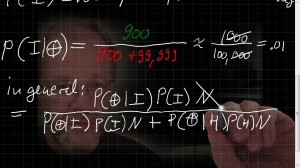

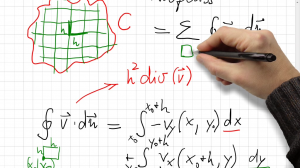
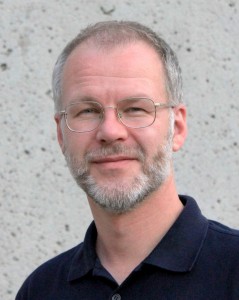
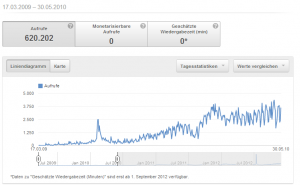
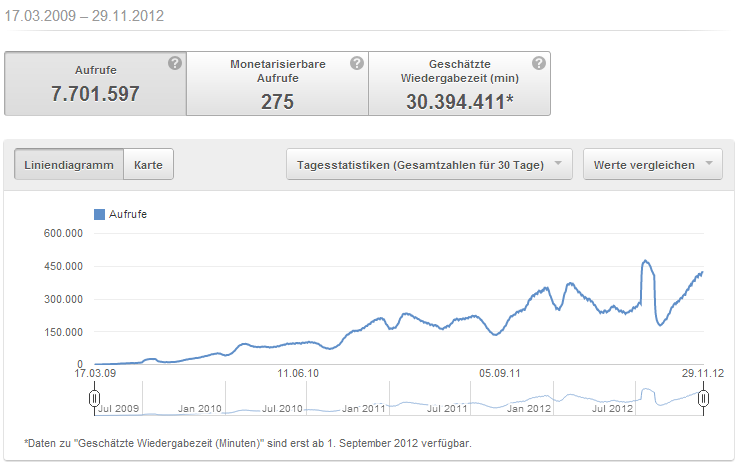

[...] Über 8 Millionen Views und mehr als 17.000 Abonnenten auf YouTube, und das für Mathe-Videos in deutscher Sprache! Jörn Loviscach, Professor für Ingenieurmathematik und technische Informatik an der FH Bielefeld, ist im Netz beileibe kein Unbekannter mehr. Noch reizvoller wird dieses Porträt, wenn man weiß, dass er kürzlich ein neues Spielfeld entdeckt hat und jetzt auch auf Udacity, einer der großen MOOC-Plattformen, unterrichtet. Am Rande des Artikels wird dann noch erwähnt, dass die EU überlegt, ein MOOC-Programm aufzulegen. Whatever that means … Paul Glader, WiredAcademic, 3. Januar 2013 [...]